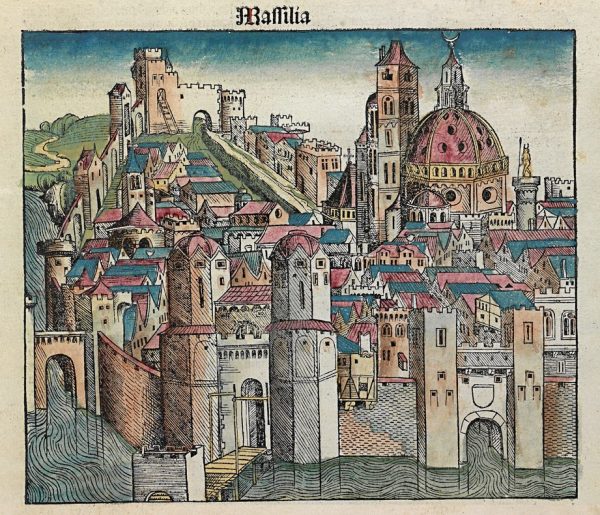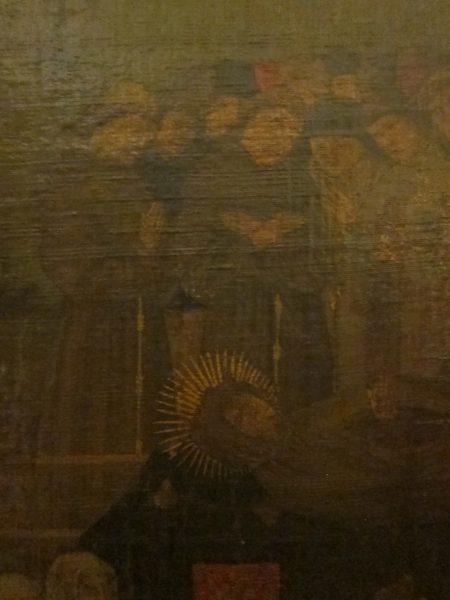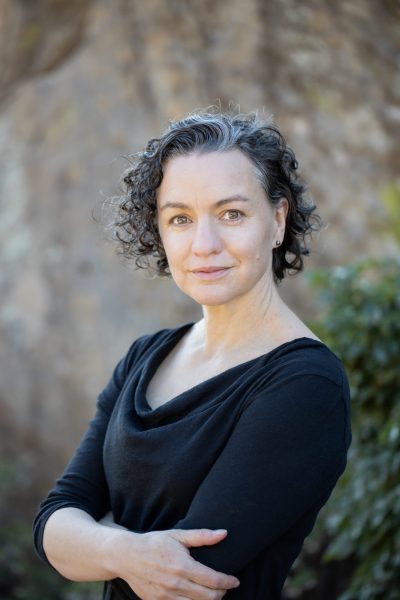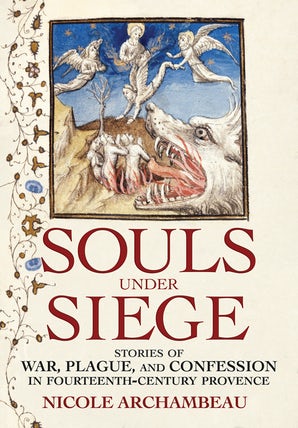PHOTO: The Tard-Venus pillage Grammont in 1362, from Froissart's Chronicles.
The human experience of catastrophe lives in stories. Whether floods or forest fires, terrorist attacks or pandemics, people shape their experiences into stories that help them make sense of a catastrophe. But what happens when several catastrophes hit at once? Simultaneous crises can cause a cascade effect, where seemingly separate problems trigger and amplify each other. The impact of a cascade on human physical and mental health can be enormous, but very hard to articulate. Studying stories is one way to see how people understand and try to solve the problems created by multiple crises occurring at the same time.

As a medieval historian, I stumbled on a trove of crisis stories while studying a canonization inquest – a large legal procedure to determine if a local holy person should be made an official saint of the Catholic Church. (This inquest process took shape in the 13th century and still exists in the Catholic Church today.) In this inquest, a group of 70 witnesses testified in 1363 to events in the life of a local holy woman. Reading witness testimonies about dangers they faced and miracles they received through their saint, it became clear that these people were living through a cascade of catastrophes.
In this horrific year, one community in Provence turned to their holy woman, Delphine de Puimichel, for miraculous aid. According to their testimonies, she filled the gap left by feuding local political leaders. She protected towns by making them wondrously appear better defended than they were. She fed hungry crowds by miraculously multiplying food resources. And she healed several plague sufferers who prayed for her intercession. These miracle stories inspired hope and built resilience in the communities that shared them.

But miracle stories did more than just boost morale. The structure of miracle stories also makes them problem-solving stories. When describing a miracle, witnesses first identified the problem that they faced. Then they described the ways they tried to solve the problem or why the problem was unsolvable. For example, one of the problems witnesses faced was defending their town from a mercenary technique called escalade, in which mercenaries secretly scaled the town wall and opened the gates from the inside. Witnesses begged Delphine to protect their town during a storm when they could not see if mercenaries were scaling the walls. They had tried to put more men on the walls, but did not have enough men to see the whole length of the wall. Only when human ability failed did these people seek miraculous aid.
The people in this inquest knew, however, that not just anyone received a miracle. Testimonies reveal how the witnesses changed their own behavior in order to be worthy of the miraculous solutions they prayed for. They worked to improve their own spiritual “health” in multiple ways, like giving alms, spending less money on luxuries, and confessing sins. We see this in the testimony of a lawyer in Aix-en-Provence who contracted the plague. He asked people for advice, but no one knew of a medical solution for plague. One woman suggested he pray to Delphine to intercede with God for him. Before he prayed, however, he prepared himself by confessing his sins, improving his spiritual health so that he could ask for God’s intercession with his physical health.
Analyze Text Like a Historian
An excerpt from the legal testimony of witness Catherine de Puy, from the canonization inquest of Delphine de Puimichel, 1363 ce
Moreover, she said that five years had elapsed, as it seemed to her, namely the year that the Gascons were in Provence, the witness speaking saw and heard in the place of Ansouis, in the Aix-en-Provence diocese, and all around in the many places that the said Gascon enemies were, that, with the terrible storm in the said place of Ansouis, where the said lady Delphine was, and there was darkness and gloom on the earth, and on account of the said storm that, as it were, one man could not see the next outside, and men from outside were not able to see or stay on the fortifications in order to protect the castle; (1) and there was a danger that the said enemies would come up with ladders at that time and seize the said place, just as they had done in many places, with similar strong storms and darkness; and while the people of the said place were fearing and sad concerning the previously mentioned, because (2) it was not possible to protect the said place, the said [witness] speaking, hearing this and seeing that people came down from the said walls, she begged the said lady Delphine that she ask God on behalf of the said people thus troubled, and that He have the said storm cease. Then the said lady, with hands joined and raised to the sky, said these words, “O Lord God, you should have pity for these poor people!” joining with, (3)“I entreat you through the living God, through the holy God, and through the omnipotent God,” and the said [witness] speaking heard [these] words, but few other words the said lady Delphine said, and this witness speaking did not understand. (4) As those words were spoken by the said lady Delphine, this witness speaking was holding food in her hands, which she wished to prepare for the said lady Delphine to eat for dinner, before she had been able to place it on the three-legged [table], she saw that the said storm had ceased and receded and the weather was clear.
Highlight 1: The witness is describing the mercenary tactic of escalade.
Highlight 2: The townspeople have a problem they can’t solve – they can’t protect themselves because of the storm – so they ask Delphine to intercede with God.
Highlight 3: Interestingly, after asking God for mercy, the holy woman Delphine begins exorcising the storm.
Highlight 4: The witness considered the storm’s passing a miracle because it happened so quickly (i.e. before she could put Delphine’s dinner on the table.)
People in the 21st century may not share the same cultural attitudes as these 14th century witnesses, but by suspending our judgment, researchers can see how concepts like ‘health’ and ‘healing’ can differ across cultures. These individuals, facing a cascade of crises, understood their physical and spiritual health as intertwined. Miracle stories show how these witnesses sought active solutions to seemingly insurmountable problems. As people build and share stories of extreme events, they reinforce community bonds, offer hope, and test solutions. Studying those stories can improve our understanding of other cultures and suggest unexpected solutions.

About the Author
Dr. Nicole Archambeau is an assistant professor in the Department of History at Colorado State University. She's a social and cultural historian of healing. Dr. Archambeau takes an integrative approach to the history of healing in the later Middle Ages, focusing on the intersection of learned medicine, the sufferer's experience, and spiritual identity.
Souls under Siege

In Souls under Siege, Nicole Archambeau explores how the inhabitants of southern France made sense of the ravages of successive waves of plague, the depredations of mercenary warfare, and the violence of royal succession during the fourteenth century. Many people, she finds, understood both plague and war as the symptoms of spiritual sicknesses caused by excessive sin, and they sought cures in confession.
Archambeau draws on a rich evidentiary base of sixty-eight narrative testimonials from the canonization inquest for Countess Delphine de Puimichel, which was held in the market town of Apt in 1363. Each witness in the proceedings had lived through the outbreaks of plague in 1348 and 1361, as well as the violence inflicted by mercenaries unemployed during truces in the Hundred Years' War. Consequently, their testimonies unexpectedly reveal the importance of faith and the role of affect in the healing of body and soul alike.
